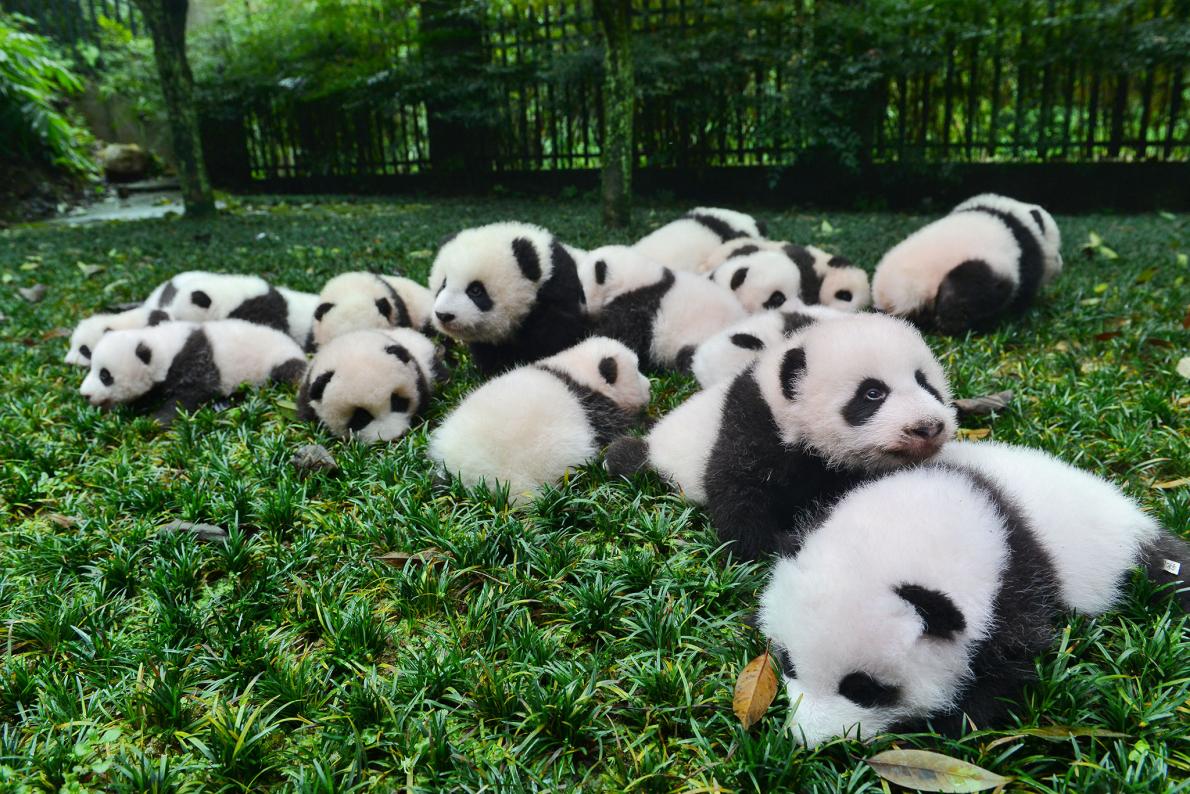Giant pandas that are crazy about each other produce more cubs than panda couples lacking that mysterious spark, according to new research.
Even a one-sided romance has better odds of producing a baby than a mutually indifferent union.
The finding could provide a significant boost for the endangered species, many of which are lacking in the amorous arts.
Exhibit A are Mei Xiang and Tian Tian, the female and male pandas at Smithsonian's National Zoo in Washington, D.C. All three of their cubs were conceived via artificial insemination after their parents couldn’t seal the deal the old-fashioned way. (Related: "These Newborn Pandas Face 4 Big Threats to Survival.")
Such unsatisfying arranged marriages are all too common for pandas, whose total population is roughly 2,000. About 300 live in human-run facilities, some of which are breeding the rare animals in the hopes of eventually reintroducing them into the wild.
Labor of Love
While studying captive pandas at the Chengdu Panda Base, a branch of the China Conservation & Research Centre for the Giant Panda, Meghan Martin-Wintle noticed that many panda couples chosen as genetic matches didn’t hit it off.
Some bears would growl at each other and even chase each other away, recalls Martin-Wintle, the new study's leader and a postdoctoral associate at the San Diego Zoo.
Females sat down rather than allowing males to sniff the under-tail area, which to pandas is a form of flirtation. Males did everything by the book except mate.
“I’ve seen the female back into a corner once the male enters,” Martin-Wintle says. “I’ve seen the fur tufts fly."
But when arranged panda pairs happened to like each other, they would make goat-like bleating sounds, and females would make a chirp that Martin-Wintle describes as a “come hither” call. (Also see "Is Breeding Pandas in Captivity Worth It?")
Infatuated females presented their rears to their partners and hunched themselves up for mating. But such tender scenes just didn't happen often enough.
The Chengdu facility, which selects males and females to ensure genetic diversity, “was getting a lot of failures and a lot of aggression,” Martin-Wintle recalls.
“It really struck me that we had nearly eliminated mate choice from captive breeding by focusing so much on just the genetics.”
The Mating Game
So Martin-Wintle and her colleagues observed single pandas living in adjoining enclosures at the Bifengxia Panda Base in Sichuan, also a branch of the panda-research center.
The pandas could see and smell each other through barred windows. The researchers noted which male and female neighbors paid each other the most attention. Then they paired males and females and watched.
If both members of a couple had previously given each other the cold shoulder, they didn’t mate successfully, the researchers report December 15 in the journal Nature Communications. But when pandas that had been making eyes at each other finally got to be alone, they almost always hit the bull's-eye. (Read more about the costs of breeding pandas in National Geographic magazine.)
Results were still good even if one member of the pair had an unreciprocated crush.
And females who’d made whoopee were twice as likely to give birth to cubs if their partner was a love interest rather than just the boring guy next door.
Reproductive physiologist Cheryl Asa of the Saint Louis Zoo, who was not involved with the study, says she’s “thrilled” with the result, which could prompt more zoos to offer their animals a choice of partner.
In the wild, it’s common for animals to prefer one potential mate to another, and those choices work to an animal’s advantage, adds evolutionary biologist Adam Jones of Texas A&M University. So the study’s results are “reasonable,” he says.
Science of Attraction
So what attracts pandas to each other?
Jones guesses that some pandas may be drawn to each other through subtle cues of genetic compatibility, which may point to partners different from those chosen by humans to maintain genetic diversity.
Females also seem to go for bigger males, says Martin-Wintle, who is now analyzing this very question.
“I suspect it’s really complicated,” she says. “Just like in humans.”
Fuente: news.nationalgeographic.com
